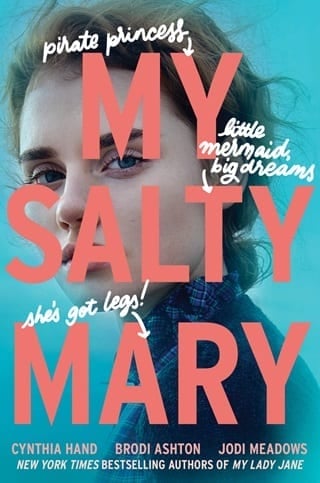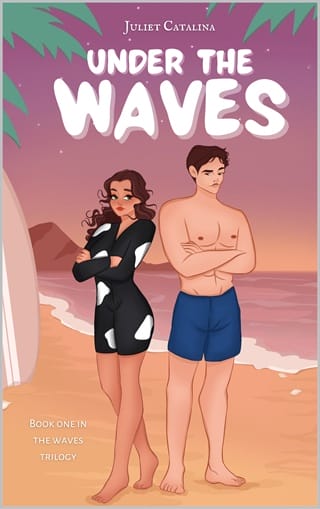Prologue
You definitely know this story. A mermaid saves a handsome prince from drowning and, in the process, falls madly in love with him. An evil sea witch magics her into becoming human—all for the low, low price of one beautiful singing voice—and it seems (for a minute there) like the mermaid is going to get her much-deserved happily ever after. But then the prince decides he's madly in love with another girl.
As for what happens next? Well, there are a few versions. In one, the mermaid battles the sea witch, triumphs, and marries the handsome prince—the story is sweet and satisfying (with maybe a few catchy musical numbers) and everything turns out just how it should. But in the older, original version of the story (the one that probably shouldn't be told to children), our heroine loses everything. The prince marries the other girl. The little mermaid dies of a broken heart and turns into sea foam.
That's right: she dies.
But there's another version. A better one. Ours.
Yes, our story is about the little mermaid. But it's also about treasure. And true love. And pirates.
A little history on pirates. Piracy has pretty much always been a thing since boats were invented, but 1719, when our story takes place, was part of what's known as the "Golden Age of Piracy." It had all started with a war: England versus Spain, with a little France thrown in. Spain was winning, so the queen of England gave a bunch of guys with ships permission to attack Spanish ships and steal the gold and supplies the Spanish were stealing from the Indigenous peoples of the Americas. These crown-approved guys with ships—aka privateers—thought of themselves as the Robin Hoods of the sea (if Robin Hood had kept all the money for himself). It was a pretty sweet gig if you liked to sail and didn't mind risking your life.
Then—as all good things must come to an end—England and Spain made peace with each other.
Overnight, the permission to plunder those shiny Spanish ships was revoked. And, overnight, a bunch of guys with a very specific set of skills no longer had jobs.
So, what's a bunch of out-of-work privateers to do?
Piracy.
But they decided to be civilized about it. They founded a brotherhood in which they supported and treated one another as equals. They set up a code of honor—specific rules for how they would operate—as they continued to relieve the Spanish of their (stolen) gold. (They also took it upon themselves to liberate the gold of the English and French.) And if they happened to come across a ship that was stealing people from, let's say Africa, the pirates might take the ship, welcome the formerly enslaved men as new recruits, and make a stop at a nearby island to let off everyone who didn't want to be a pirate.
This didn't go over well with those who were trying to build an economy on human trafficking, so the rulers of Europe collectively decided that seriously, piracy should stop being a thing. England hired a ruthless captain named Jonathan Barnet to hunt down all the most infamous pirates. To set an example, you see.
You may have heard of some of these pirates, like Captain Blackbeard, the most notorious swashbuckler to sail the seven seas. (Our version of Blackbeard is actually a combination of Blackbeard, Black Sam Bellamy, and a few other pirate-y guys who had "black" in their names.) Then there are some buccaneers you probably haven't heard of, like Mary Read and Anne Bonny, the most notorious women pirates in the Caribbean. Being a lady pirate wasn't half-bad. On a pirate ship, you didn't have to wear a corset. Your worth wasn't decided by who you married or how many babies you birthed. You could be free.
But it wasn't all sunshine and rainbows, of course. A woman on a ship was considered bad luck, so you had to dress as a man if you didn't want to get thrown overboard. It was difficult to find good shampoo. And oh yeah, you occasionally got chased by Jonathan Barnet. And if he caught you, well, that was it. You died.
That's what the historians say happened to Mary Read: she was captured, tried, and found guilty of piracy, but died in jail before she could hang.
But—bah!—what do historians know?
They certainly don't know that Mary Read and the little mermaid were the very same person. A girl who loved books so much she gave herself the last name Read. A girl who learned the hard way that romance isn't a fairy tale. A girl who's going to start out our story feeling pretty darn salty about love.
But don't worry. She'll come around.
 Fullepub
Fullepub 



